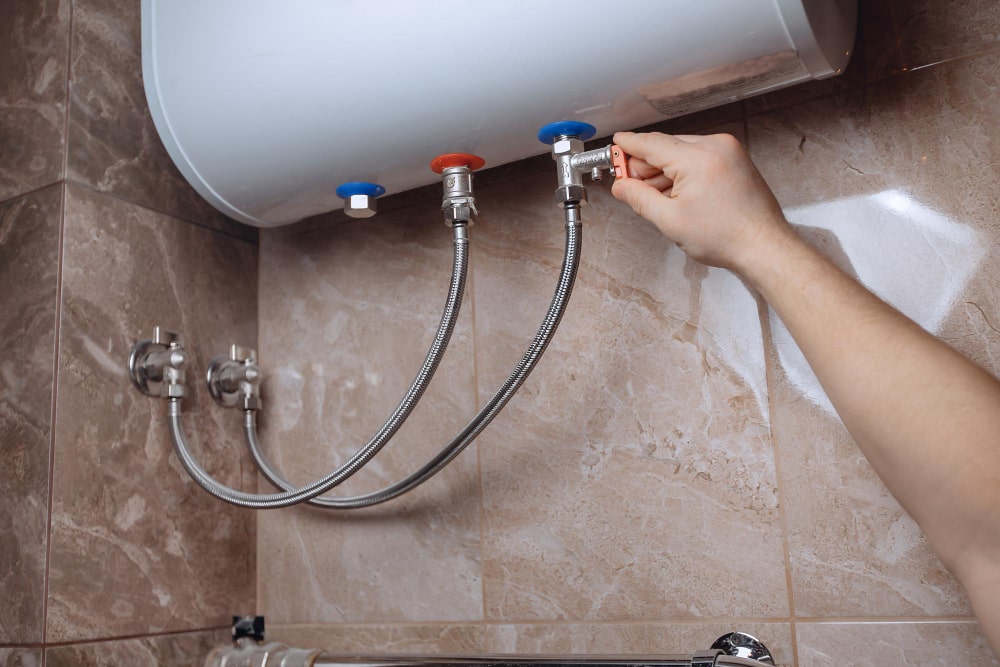Best Practices for Maintaining Your Home's Hot Water System
Best Practices for Maintaining Your Home's Hot Water System
Blog Article
This great article down the page relating to Tips on Maintaining a Water Heater is immensely remarkable. Don't skip it.

Warm water is essential for day-to-day convenience, whether it's for a revitalizing shower or cleaning dishes. To ensure your warm water system runs successfully and lasts much longer, routine maintenance is key. This write-up gives useful suggestions and understandings on just how to preserve your home's hot water system to stay clear of disturbances and expensive repair work.
Introduction
Maintaining your home's hot water system could appear difficult, but with a couple of basic steps, you can ensure it runs efficiently for many years to find. This guide covers everything from recognizing your hot water system to DIY upkeep suggestions and knowing when to call in specialist assistance.
Relevance of Keeping Your Hot Water System
Regular upkeep not only expands the life-span of your hot water system yet likewise ensures it runs efficiently. Disregarding upkeep can lead to lowered efficiency, higher power expenses, and even early failure of the system.
Indicators Your Hot Water System Demands Maintenance
Knowing when your warm water system needs focus can avoid significant problems. Keep an eye out for indications such as inconsistent water temperature level, strange sounds from the heater, or corroded water.
Comprehending Your Warm Water System
Before diving right into maintenance jobs, it's useful to recognize the basic parts of your hot water system. Normally, this consists of the water heater itself, pipelines, anode rods, and temperature controls.
Month-to-month Maintenance Tasks
Routine month-to-month checks can assist capture minor problems before they intensify.
Purging the Water Heater
Purging your water heater eliminates debris buildup, enhancing performance and prolonging its life.
Monitoring and Changing Anode Rods
Anode rods stop corrosion inside the storage tank. Evaluating and replacing them when worn is critical.
Examining and Adjusting Temperature Level Setups
Adjusting the temperature setups makes sure optimum efficiency and safety.
Do It Yourself Tips for Upkeep
You can do several maintenance tasks on your own to maintain your hot water system in top problem.
Looking for Leakages
Routinely examine pipelines and links for leakages, as these can lead to water damage and higher expenses.
Examining Stress Alleviation Valves
Testing the pressure relief valve ensures it works appropriately and prevents too much pressure buildup.
Insulating Pipes
Insulating hot water pipes reduces warm loss and can save energy.
When to Call an Expert
While do it yourself upkeep is valuable, some issues call for specialist expertise.
Facility Problems Needing Expert Help
Examples consist of significant leaks, electrical problems, or if your hot water heater is continually underperforming.
Regular Expert Maintenance Conveniences
Specialist upkeep can include comprehensive examinations, tune-ups, and making sure compliance with safety and security requirements.
Final thought
Regular upkeep of your home's hot water system is important for efficiency, long life, and expense savings. By adhering to these ideas and knowing when to look for professional aid, you can guarantee a reliable supply of warm water without unforeseen disruptions.
How to Maintain an Instant Hot Water Heater
Before tinkering with your hot water heater, make sure that it’s not powered on. You also have to turn off the main circuit breaker and shut off the main gas line to prevent accidents. Also turn off the water valves connected to your unit to prevent water from flowing into and out of the appliance. 2. When you’re done, you have to detach the purge valves’ caps. These look like the letter “T†and are situated on either side of the water valves. Doing so will release any pressure that has accumulated inside the valves while at the same time avoid hot water from shooting out and burning your skin. 3. When the purge valves’ caps are removed, you have to connect your hosing lines to the valves. Your unit should have come with three hoses but if it didn’t, you can purchase these things from any hardware or home repair shops. You can also get them from retail stores that sell water heating systems. Read the user’s manual and follow it to complete this task properly. When the hosing lines are connected, open the purge port’s valves. 4. You should never use harsh chemical cleaners or solutions when cleaning your unit. Make use of white vinegar instead. It should be undiluted and you’ll probably use about 2 gallons. 5. Now flush your water heater. This task should probably take about 40 minutes. We can’t give you specific directions for this because the procedure is carried out depending on the type, model and brand of your heater. With that being said, refer to the user’s manual. 6. When you’re done draining the unit, you have to turn off the purge port valves again. Remove the hosing lines that you earlier installed on each of the water valves. Put the valve caps (purge port) back in their respective places and be very careful so as not to damage the rubber discs that are found inside these caps. 7. Now that everything’s back in place, check your user’s manual again to find out how to reactivate your water heating system. 8. Once it is working, turn one of your hot water faucets on just to let air pass through the heater’s water supply pipes. Leave the tap on until water flows smoothly out of it. https://www.orrplumbing.com/blog/2014/september/how-to-maintain-an-instant-hot-water-heater/

I hope you liked our part about Tips For Maintaining Your Hot Water Heater. Many thanks for spending some time to read through our short article. Kindly take the time to promote this blog entry if you liked it. Thank you for going through it.
Call Today Report this page